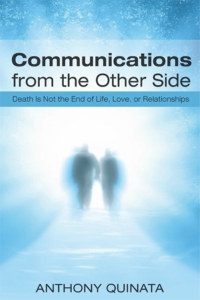Q) Did Famed Psychic Edgar Cayce Once Locate Amelia Earhart?
A) More than 70 years ago, Amelia Earhart captured the imagination of much of the world by becoming an aviation pioneer and excelling in a field that had once been limited to only men. Because of her charisma and her courage in breaking down barriers, she became an inspiration to countless individuals. Her story continues to inspire and capture the imagination.
Earhart disappeared just before her 40th birthday along with her navigator, Fred Noonan, during a failed attempt to circumnavigate the globe. Still, her historic accomplishments are many. She gained international fame with a number of firsts: she was the first woman to receive the Distinguished Flying Cross; she was the first woman to fly solo across the Atlantic Ocean; she founded an organization for female pilots; she wrote best-selling books about her flying adventures; and, she was a faculty member of Purdue University’s Aviation Department.
Less well known—Edgar Cayce was asked to help locate her three days after her disappearance.
July 5, 1937, a member of Edgar Cayce’s Association for Research and Enlightenment [1293] and an acquaintance of Earhart’s husband, George Putnam, requested a reading to help locate Amelia Earhart and Fred Noonan. The request given to the sleeping Cayce was as follows:
“You will have before you the request from [1293], for information regarding locating Amelia Earhart who according to radio reports on July 2, 1937, was approximately 100 miles from Howland Island in the South Pacific Ocean, in her plane. You will locate the plane as of this time and then trace it to its present position, giving specific directions for locating this plane now. You will answer the questions regarding this.”
As soon as the sleeping Cayce began the reading he noted that conditions for Earhart and Noonan were “rather serious” but that both were still alive. Cayce suggested that the two could be found if a ship followed the reef that extended from Howland Island in a northwesterly direction for approximately 100 miles.
Asked, “What is the present condition of Amelia Earhart and her companion [George Noonan]?” Cayce replied: “Amelia Earhart … [is] much better than the companion; for the companion has been panicky…”
When asked about the condition of the plane, Cayce replied that it was no longer flyable: “It is broken up somewhat, but this as we find is more from the attempt in the landing when gas was gone than from anything else; though to be sure, the winds and the inability to stabilize same has made all very out of order; not able to proceed even with gas.”
In terms of their supplies, Cayce stated that there was “mighty little” of either food or water. When asked about their chances for recovery, Cayce replied that the conditions were growing worse all the time but that, because of rescue attempts already set in motion, the best possibility for recovery would be by the next morning, provided rescue attempts continued along the same path “in the right direction.”
For weeks, a fleet of planes scoured the area looking for any signs of the aircraft, without success. Thirteen days later, the search was called off. It was feared that Noonan and Earhart had perished and lay somewhere beneath the Pacific.
However, George Putnam, had not given up hope. On July 31, 1937, A.R.E. member [1293] sent a wire to Edgar Cayce stating that Putnam was still very interested in Cayce continuing the search:
“Mr. Putnam very sorry cannot come to Virginia Beach but would appreciate very much your doing whatever possible without him. He has confidence in your work and any report will have much bearing on his future plans. Please phone, wire or write information to [1293] at my home."
A follow-up reading was given the next day, August 1, 1937. The suggestion given to the sleeping Cayce was:
“You will have before you the desire of George Putnam for further information regarding his wife, Amelia Earhart, as requested through Mrs. [1293] of N.Y., and the information given through this channel on July 5, 1937. You will give any further information which will be helpful at this time, and answer the questions that may be asked.”
Cayce immediately responded with the fact that it was too late. He stated that Earhart had lasted until July 21, 1937, before succumbing to the elements. Apparently Noonan had died earlier, as the sleeping Cayce noted that Earhart perished alone. In an attempt to pin-point the location of the body with a little more accuracy and offer what help he could to Putnam, Cayce added that her body was located “between eighty-nine and ninety miles northwest from her intended destination” … [of] Howland Island. Upon receiving the information, Mrs. [1293] replied:
“Sad as the news is, I feel your last communication is all too true and that Amelia is gone. I held out hopes for quite a while but the time-element was so long to have survived three weeks seems almost incredible. And to think that the fleet of planes gave up the search on the 18th and she evidently lived until the 21st. I shall somehow get the news to George Putnam when I can although the man is so terribly stricken, yet trying very hard to carry on. He has almost nightly sessions with Hereward Carrington and some other psychics from the Psychic Research Society and I believe that the strain is bad for him. Hard as it may be for him and for us all to face the inevitable fact, perhaps a definite knowledge will be better news than none at all. The whole affair has been a great setback to me because I felt very sure Amelia would make a safe flight and told her so, and even advised her when to start on it, so to have the thing end in disaster gives astrology (and [1293]) an awful blow. I shall never again make a prediction with the same carefree attitude that I had before this happened. Perhaps that is my lesson.”
Whether or not Edgar Cayce had accurately tuned into Amelia Earhart, her location, and her situation may never be known. What is known is that this woman has captured the imagination of the world for many decades, and will continue to capture our imagination for many, many more.
How to Ask Edgar
Though Edgar Cayce died in 1945, he left us a legacy of 14,306 readings covering an astonishing 10,000 topics in about 24 million words! Send your question through our Ask Edgar Submission Form, and a staff person or volunteer will mine the readings database for an answer. Though we can't promise that all questions will be answered, you can check our Ask Edgar blog category for a response to yours or similar questions.







